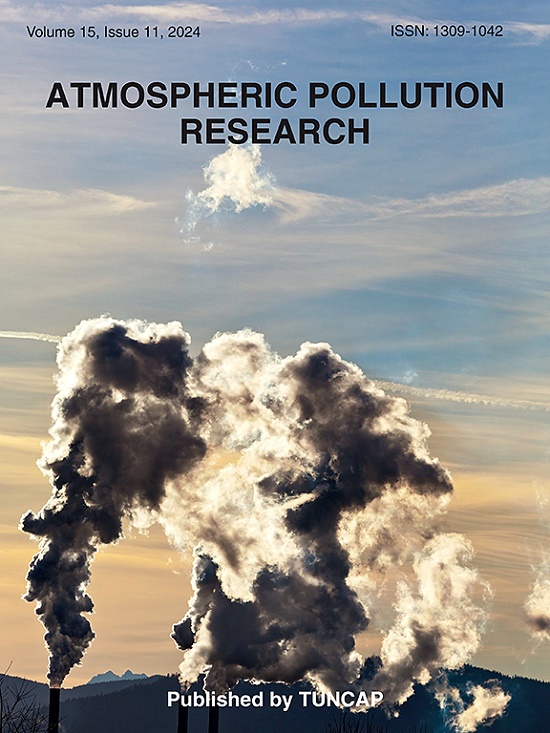Atmospheric microplastic deposition in Guilin karst wetlands: Sources and agricultural impact
IF 3.9
3区 环境科学与生态学
Q2 ENVIRONMENTAL SCIENCES
引用次数: 0
Abstract
Atmospheric deposition of microplastics (MPs) poses a significant threat to natural wetlands. This study investigates the characteristics, distribution, and sources of atmospheric MPs in the Huixian Wetland, focusing on the influence of land use and human activities. The results show an average MP deposition rate of 98.85 ± 43.50 items·m−2·d−1, with wet deposition at 110.93 ± 42.67 items·m−2·d−1 and dry deposition at 86.17 ± 41.67 items·m−2·d−1. Deposition rates were found to be significantly higher in non-wetland park areas compared to wetland parks. MPs smaller than 500 μm comprised 60 % of the total, predominantly fibrous (93 %) and colorless or transparent (83 %). The dominant polymers were PE (31 %) and PP (23 %). The primary source of atmospheric MPs in the Huixian Wetland is local agricultural activity. Cluster analysis indicates that atmospheric MPs serve as a major source of microplastics in other environmental media within the wetland. The geological characteristics of the wetland, coupled with agricultural practices, exacerbate microplastic pollution. Additionally, human activities such as tourism and transportation contribute to the influx of MPs into the wetland. This study provides essential insights for the management and reduction of MP pollution in karst wetlands and protected areas.

桂林喀斯特湿地大气微塑料沉积:来源及农业影响
微塑料在大气中的沉积对天然湿地造成了严重的威胁。研究了辉县湿地大气MPs的特征、分布和来源,重点分析了土地利用和人类活动对大气MPs的影响。结果表明:平均沉积速率为98.85±43.50项·m−2·d−1,其中湿沉积速率为110.93±42.67项·m−2·d−1,干沉积速率为86.17±41.67项·m−2·d−1。非湿地公园的沉积速率明显高于湿地公园。小于500 μm的MPs占总数的60%,主要是纤维状的(93%),无色或透明的(83%)。主要聚合物为PE(31%)和PP(23%)。惠县湿地大气MPs的主要来源是当地的农业活动。聚类分析表明,大气MPs是湿地内其他环境介质中微塑料的主要来源。湿地的地质特征,加上农业实践,加剧了微塑料污染。此外,旅游和交通等人类活动也导致MPs涌入湿地。该研究为喀斯特湿地和保护区的MP污染管理和减少提供了重要的见解。
本文章由计算机程序翻译,如有差异,请以英文原文为准。
求助全文
约1分钟内获得全文
求助全文
来源期刊

Atmospheric Pollution Research
ENVIRONMENTAL SCIENCES-
CiteScore
8.30
自引率
6.70%
发文量
256
审稿时长
36 days
期刊介绍:
Atmospheric Pollution Research (APR) is an international journal designed for the publication of articles on air pollution. Papers should present novel experimental results, theory and modeling of air pollution on local, regional, or global scales. Areas covered are research on inorganic, organic, and persistent organic air pollutants, air quality monitoring, air quality management, atmospheric dispersion and transport, air-surface (soil, water, and vegetation) exchange of pollutants, dry and wet deposition, indoor air quality, exposure assessment, health effects, satellite measurements, natural emissions, atmospheric chemistry, greenhouse gases, and effects on climate change.
 求助内容:
求助内容: 应助结果提醒方式:
应助结果提醒方式:


